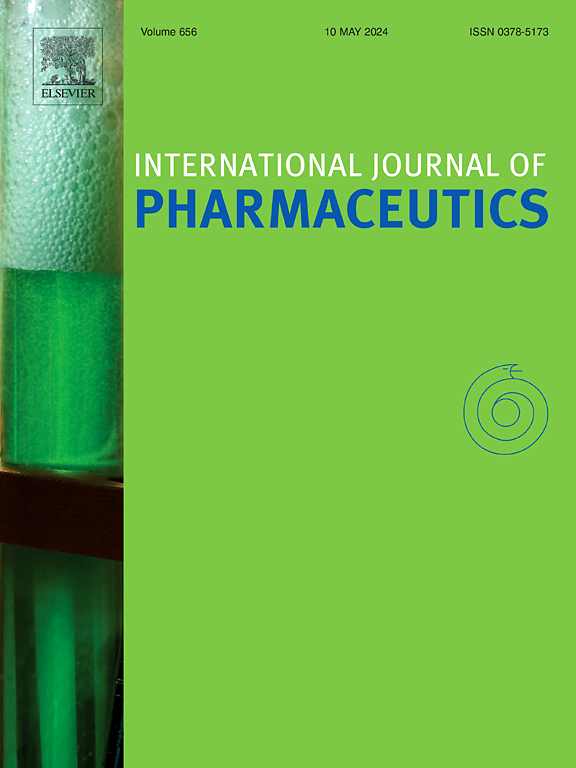Development of impact resistant immediate release amorphous solid dispersion via hot-melt extrusion and injection molding
IF 5.3
2区 医学
Q1 PHARMACOLOGY & PHARMACY
引用次数: 0
Abstract
Immediate release (IR) amorphous solid dispersion (ASD) tablets are currently manufactured via a multi-step process which includes hot melt extrusion (HME), grinding of the extrudate, sieving to achieve narrow particle size, blending with other excipients, and finally, direct compression. Due to the multi-step nature of the process, the production time and costs are much higher for ASD tablets than conventional tablets. Thus, a new and more efficient method of IR-ASD tablet production using HME coupled with injection molding (IM) was explored as a viable alternative. Moxidectin, a low-dosage, high-potency BCS class II drug was used as a model API for formulation development. Interestingly, these tablets were also found to be porous (5.01 % φ) due to thermal decomposition of NaHCO3. The IM tablets were measured against United States Pharmacopeia (USP) quality standards for content uniformity, tablet friability, and dissolution. The content uniformity of these tablets was ± 2 % of the label claim, and over 90 % API release was observed within 1 h in 0.74 % Tween 20 media. PXRD diffractograms revealed that the stability of the ASD at room temperature conditions was excellent. Placebo and API-loaded formulations were extruded and injection molded into circular and unique geometries using molds produced by stereolithography. Lastly, the HME-IM tablet formulations were observed to be extremely tough and would be an excellent candidate in the production of abuse-deterrent formulations for controlled substances.
采用热熔挤压和注射成型技术研制抗冲击立即释放非晶态固体分散体
立即释放(IR)非晶固体分散体(ASD)片剂目前通过多步骤工艺生产,包括热熔挤压(HME),挤压物研磨,筛分以达到窄粒度,与其他辅料混合,最后直接压缩。由于该工艺的多步骤性质,ASD片剂的生产时间和成本比传统片剂高得多。因此,研究了一种新的、更有效的IR-ASD片剂生产方法,即HME与注射成型(IM)相结合。莫西丁是一种低剂量、高效的BCS II类药物,以其为模型API进行配方开发。有趣的是,由于NaHCO3的热分解,这些片剂也被发现是多孔的(5.01% φ)。根据美国药典(USP)质量标准测定了IM片的含量均匀性、片剂脆性和溶出度。在0.74%的Tween 20介质中,1 h内原料药释放率达90%以上。PXRD衍射图显示ASD在室温条件下的稳定性很好。安慰剂和api加载的配方被挤压和注射成圆形和独特的几何形状,使用立体光刻生产的模具。最后,观察到HME-IM片剂配方非常坚韧,将成为生产管制物质的防滥用配方的极好候选者。
本文章由计算机程序翻译,如有差异,请以英文原文为准。
求助全文
约1分钟内获得全文
求助全文
来源期刊
CiteScore
10.70
自引率
8.60%
发文量
951
审稿时长
72 days
期刊介绍:
The International Journal of Pharmaceutics is the third most cited journal in the "Pharmacy & Pharmacology" category out of 366 journals, being the true home for pharmaceutical scientists concerned with the physical, chemical and biological properties of devices and delivery systems for drugs, vaccines and biologicals, including their design, manufacture and evaluation. This includes evaluation of the properties of drugs, excipients such as surfactants and polymers and novel materials. The journal has special sections on pharmaceutical nanotechnology and personalized medicines, and publishes research papers, reviews, commentaries and letters to the editor as well as special issues.

 求助内容:
求助内容: 应助结果提醒方式:
应助结果提醒方式:


